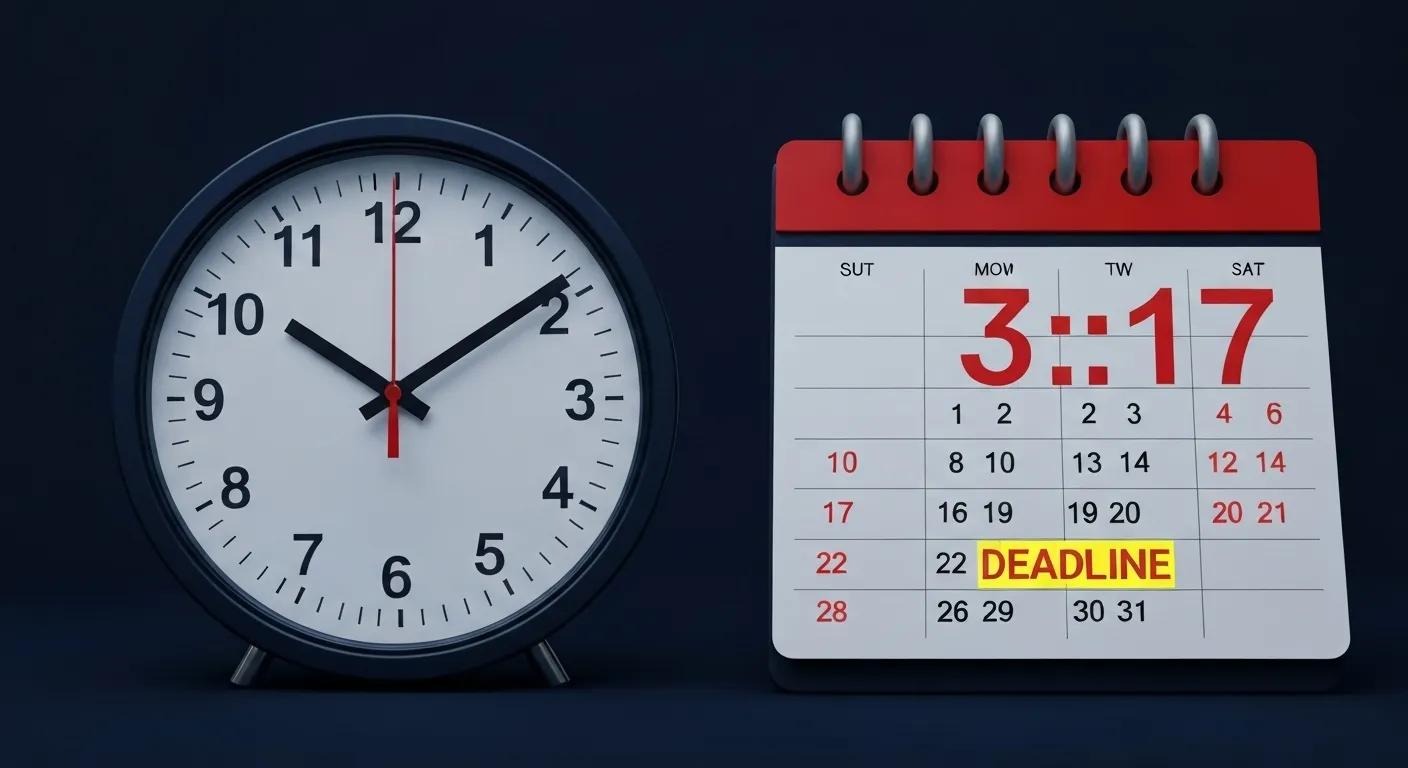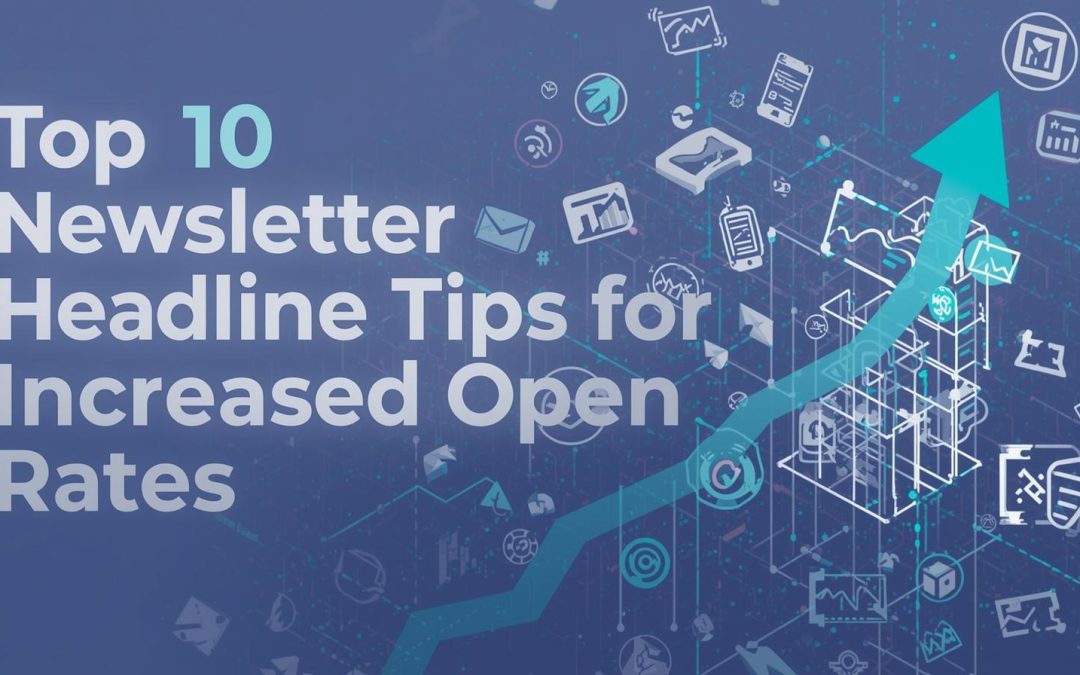A catchy newsletter headline is your best chance to grab a reader’s attention in a crowded inbox. It decides if your message gets opened or ignored. In today’s busy digital world, a strong subject line is essential for showing relevance and value right from the start.
There’s a clear link between a good subject line and higher open rates. A bland headline often leads to low engagement, while a clever one can dramatically boost interest. This guide offers ten easy strategies to help you create standout newsletter headlines that get the engagement you’re looking for.
1. Use Numbers to Create Structure and Urgency
Headlines with numbers are really effective because they give a straightforward structure. People appreciate knowing what to expect and how much information they’ll receive. It’s easy to get into content when it’s predictable like this. It makes it super user-friendly and useful. Titles like “5 Tips to Boost Your Email Open Rates” or “10 Ways to Write Better Newsletter Headlines” clearly signal value and provide actionable takeaways. Numbers create a sense of order and can also subtly imply urgency, especially when combined with time-sensitive language.
Some studies suggest that odd numbers might perform better than even ones. They feel more specific and less rounded, giving a sense of unique info. But the main advantage comes from their structure.
2. Ask a Thought-Provoking Question
The power of curiosity in email marketing is immense. A well-crafted question can stop a reader mid-scroll and compel them to open your email simply to find the answer. It taps into a natural human desire to resolve uncertainty and gain knowledge.
When you’re coming up with questions, think about what your audience is struggling with or what they really want to achieve. If your newsletter is all about productivity, something like “Are You Wasting Time on These Productivity Killers?” hits right at a concern that a lot of people have.
Sample high-converting questions include:
- “Is your newsletter headline costing you subscribers?”
- “What if you could double your email open rates?”
- “Are you making this common mistake in your subject lines?”

3. Include a Time-Sensitive Trigger
Incorporating time-sensitive triggers into your newsletter headlines can significantly increase open rates by creating a sense of urgency. Phrases like “Don’t Miss This…” or “Ends Tonight” tap into the fear of missing out (FOMO) and encourage immediate action.
Urgency gets people to pay attention to your email because they feel there’s a limited chance to act. But it’s really important to use that sense of urgency honestly and not come off as spammy. If you overdo it or don’t use it right, you could lose trust and risk people unsubscribing.
Examples of effective, non-spammy triggers include:
- “Last chance: Your discount expires at midnight”
- “Limited spots available for our webinar”
- “Flash sale ends in 3 hours!”
4. Personalize with the Reader’s Name or Interests
Personalization is highly effective in subject lines because it makes the email feel tailored specifically for the recipient. When readers see their names or interests, the email feels more personal and relevant.
Tools like Mailchimp, HubSpot, or ConvertKit can automate name-based personalization by pulling data from your subscriber list. You can also use segmentation to tailor headlines based on past purchase history, engagement levels, or stated preferences.
Best practices for segmenting your list and personalizing headlines include:
- Demographic Segmentation: Tailor offers based on location or age.
- Behavioral Segmentation: Reference past purchases or website activity.
- Engagement Segmentation: Offer exclusive content to highly engaged subscribers.
- Interest-Based Segmentation: Align headlines with topics users have shown interest in.
For example, instead of a generic subject line, try “Sarah, your weekly productivity tips are here” or “Because you loved our last guide, here’s more…”.
5. Keep It Short and Mobile-Friendly
A lot of folks check their emails on their phones these days, so it’s super important to keep your newsletter subject lines short and simple. Mobile email apps usually cut off longer lines, which means the key info might get hidden.
The ideal character count for headlines is generally between 35–50 characters. This range makes sure that your main message is easy to see on most mobile devices without getting cut off. If you go too long, it might get trimmed down, which takes away from its impact.
How long is too long? Subject lines exceeding 60 characters are highly likely to be truncated on mobile. Prioritize clarity and impact within the first 40-50 characters.
Testing headlines on different devices is essential. Use your email marketing platform’s preview tools or send test emails to yourself to see how your subject lines appear across various email clients and devices (Gmail, Outlook, Apple Mail, iOS, Android).
6. Use Power Words to Evoke Emotion
Power words are emotionally charged words that can grab attention and influence a reader’s decision to open an email. They connect with basic human feelings and wants, which makes your subject line way more interesting.
Consider these emotional triggers:
- Curiosity/Intrigue: “Secrets,” “Surprising,” “Discover,” “Uncover”
- Benefit/Value: “Free,” “Save,” “Boost,” “Improve,” “Exclusive”
- Urgency/Scarcity: “Limited,” “Last Chance,” “Ends Soon,” “Now”
- Ease/Simplicity: “Easy,” “Simple,” “Quick,” “Effortless”
Achieving the perfect balance between compelling drama and genuine authenticity is essential for impactful communication. Words like “Shocking” or “Unbelievable” might grab attention, but they can feel like clickbait if you don’t back them up. It’s best to choose words that create good vibes or real curiosity without leading anyone astray.
7. A/B Test Different Headline Styles
You should always be testing your newsletter headlines. What works for one audience might not work for another, and trends change. A/B testing (or split testing) is a way to check out two different versions of a subject line to find out which one does better.
When A/B testing, focus on tracking key metrics such as:
- Open Rate: The percentage of recipients who opened your email.
- Click-Through Rate (CTR): The percentage of recipients who clicked a link within your email after opening it.
- Conversion Rate: The percentage of recipients who completed a desired action (e.g., purchase, download).
- Deliverability: Ensuring your emails reach the inbox.
To achieve statistically valid results, run your A/B tests for a sufficient period, typically until you have a significant sample size or a clear winner emerges. This might take anywhere from a few hours to a few days, depending on your list size and send frequency.
8. Align Headlines with the Content Inside
A key part of getting your newsletter headline right is making sure it matches the content of your email. Avoid clickbait to maintain your audience’s trust. If your headline promises more than the email delivers, it will disappoint readers, resulting in lower engagement and potential unsubscribes.
A mismatch between the headline and content can harm your email performance over time. Misleading headlines can reduce email open rates. Finalize your content first, then create a headline that accurately reflects it. Treat your headline as a contract with your reader and ensure you fulfill its promise.
9. Use Emojis (But Strategically)
Emojis can be a powerful tool to make your newsletter headlines stand out in a crowded inbox. They add visual appeal, convey emotion quickly, and can increase open rates when used appropriately.
Research suggests that emojis can indeed help boost open rates, sometimes by a significant margin. However, their effectiveness depends on the audience and the context.
Which emojis work best and why? Generally, emojis that are universally understood and relevant to the email’s content perform well. For example:
- 🎉 for celebrations or announcements
- 🔥 for hot deals or trending topics
- 💡 for tips or ideas
- ⏰ for urgency or deadlines
- 🎁 for gifts or special offers
Industry-specific dos and don’ts are important. Using a fun emoji can be perfect for a lifestyle brand, but it might come off as unprofessional for a financial services company. It’s super important to think about your brand’s vibe and what your audience expects. Also, don’t forget to check how emojis look in different email clients, since they can sometimes show up differently or not at all.

10. Leverage FOMO and Scarcity Tactics
Tapping into the fear of missing out (FOMO) and employing scarcity tactics can be highly effective in driving email opens. These strategies play on the psychological principle that people are more motivated to act when they perceive something is limited or in high demand.
Examples of effective FOMO and scarcity phrases include:
- “Only 3 Spots Left!”
- “Last Chance to Save 20% Today”
- “Offer Expires Midnight”
- “Don’t Miss Out on Our Exclusive Event”
These phrases generate a sense of urgency and encourage prompt action. However, it’s essential to use these tactics carefully. Overusing them or misusing them can result in reader fatigue and diminish your credibility. Apply FOMO (fear of missing out) and scarcity only when there is a legitimate reason, such as limited stock, a time-sensitive offer, or a capped number of participants.
Bonus Tip: Review Your Past Winners
Don’t forget about the great info you’ve already got! Looking back at your best subject lines from the past is a smart way to improve your future campaigns.
How to analyze your top-performing subject lines: Look for common themes, keywords, structures, or tones in the subject lines that consistently achieved high open rates. Did they use numbers? Were they personalized? Did they create curiosity or urgency?
Using past data to refine future campaigns means you’re not starting from scratch each time. You can take what works well, try out different versions of what’s already a hit, and skip the mistakes you’ve made before. It’s super helpful to have tools in your email marketing platform that track how your headlines are doing for this kind of analysis.
Conclusion
Crafting compelling newsletter headlines is an art and a science. Using these ten strategies like personalizing your emails, creating a sense of urgency, sparking curiosity, keeping it short, and mixing in some numbers and emojis you can really lift your email open rates and connect better with your subscribers. What works best will differ depending on the audience, so be sure to test and adjust these ideas to fit your readers. Finding long-term success is all about making little tweaks and really getting to know what your audience likes.
